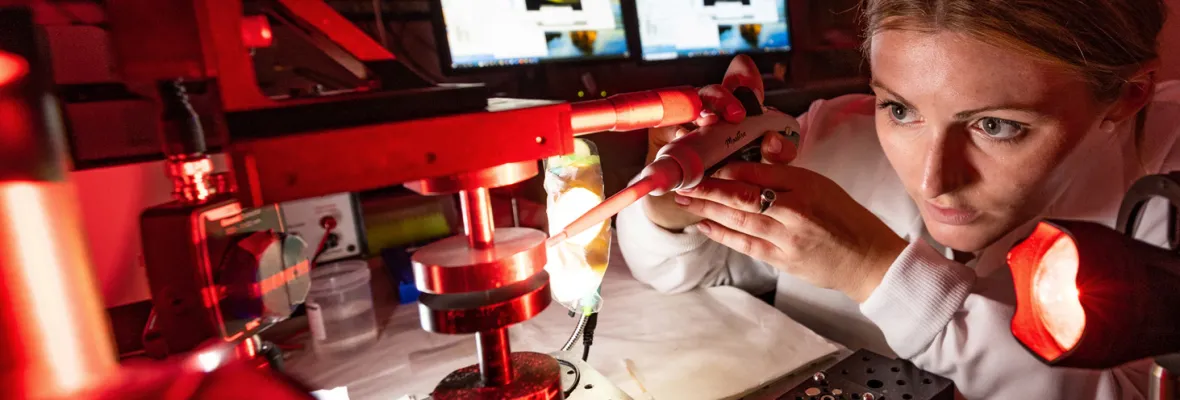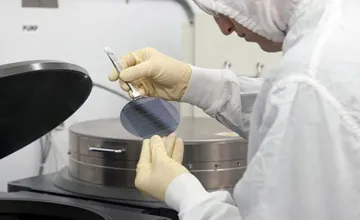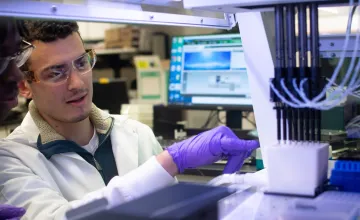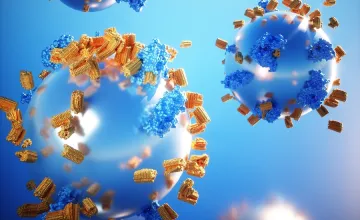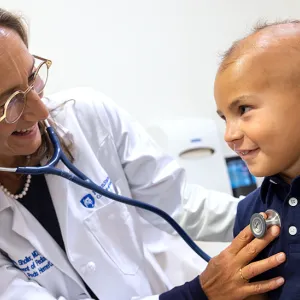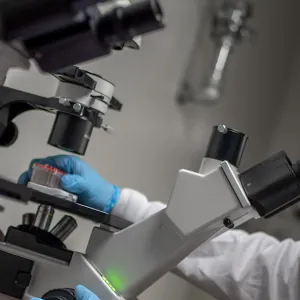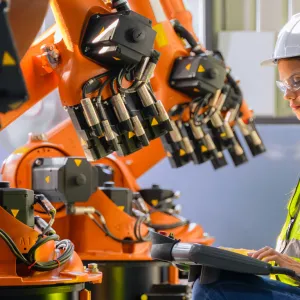America's leading research universities...
are developing cutting-edge diagnostic tools that detect diseases sooner, aiding treatment and illness prevention for patients.
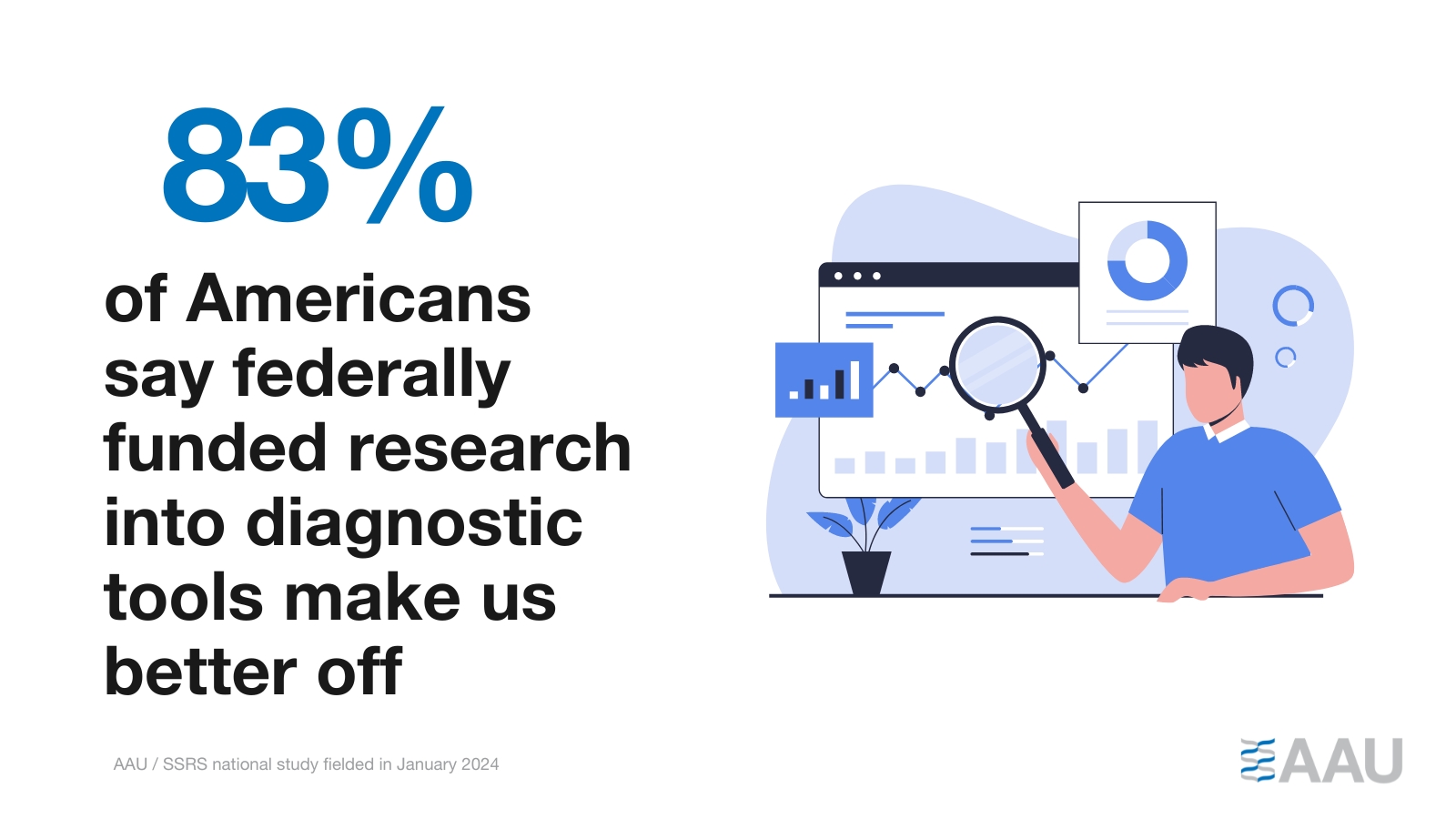
University-Based Research Helps Create Lifesaving Medical Diagnostic Tools
Federally funded university research has helped create the technologies that enable multiple life-saving modern diagnostic techniques that we take for granted today, such as magnetic resonance imaging (MRI), which can detect a host of internal conditions that, before MRI came into use, often weren’t detected until it was too late.
And right now, just for example, America’s leading research universities are currently utilizing new federal funding to pioneer new and innovative ways for surgeons to more quickly and accurately determine – through innovations like advanced optics and artificial intelligence – whether they’ve completely removed all cancerous tissue before the patient even leaves the operating table.
Here are a few other recent examples of America's leading research universities creating new medical diagnostics to give doctors an edge in detecting diseases so they can treat patients more quickly and effectively:
Faster and More Accurate Testing for Lyme Disease Patients
Lyme disease is a notoriously difficult illness to diagnose. Frequently, antibody tests produce false-negative results, and many patients display symptoms that medical professionals often confuse with other illnesses. In some cases, Lyme disease patients have a limited amount of time to get a diagnosis and seek treatment before the illness becomes a chronic, lifelong condition. To improve outcomes, researchers at Dartmouth have developed a new test that is more sensitive in its detection of the bacteria responsible for Lyme, offering accurate diagnoses for patients who need treatment in a tighter timeframe.
Detecting Viruses More Accurately
How can we know whether the next unknown viral outbreak is coming? Typical clinical tests can only detect a specific known pathogen, and Next-Generation Sequencing (NGS) tests, while better able to detect a broader range of viruses, just aren't as sensitive. So Columbia University researchers have been developing a new NGS surveillance and screening tool that can detect any virus that could potentially infect humans, known or unknown, faster and with greater sensitivity than existing tests. This could both transform precision medicine by giving caregivers the ability to quickly pinpoint the cause of an infection while also providing an enormous potential benefit to public health by providing information on viruses circulating in the community.
Improving Cancer Treatments
University of Michigan researchers have invented a chip to analyze blood samples to determine the effectiveness of a particular cancer treatment for a patient far more quickly than by traditional methods. Typically doctors have to wait weeks or even months before they can fully assess the effectiveness of a particular cancer treatment for a patient – and in the meantime patients can be receiving ineffective treatments and suffering needless side effects. This new innovation uses nanofabricated chips to capture cells in a patient's blood that have cancer-specific protein markers, allowing physicians to quickly and continuously monitor the effectiveness of a patient's treatment and pivot away from ineffective therapies to alternatives that might stand a better chance of saving their life.
More than 600,000 Americans per year are diagnosed with cancer that spreads and is treatment resistant. Existing therapy methods are struggling to target tumor cells as they evolve. In order to solve this challenge and create more personalized cancer care that can adapt throughout a patient’s treatment, America’s leading research universities are pioneering the use of computer models, probing to unlock the secrets of tumor biology, and running innovative clinical trials to find ways to save more of our friends, neighbors, and family members who receive cancer diagnoses each year. The Advanced Research Projects Agency for Health (ARPA-H) recently selected several research universities to pioneer adaptive cancer care as a part of its Advanced Analysis for Precision Cancer Therapy (ADAPT) program:
- Arizona State University researchers will use computer models to track how tumors change over time and resist cancer treatment.
- Stanford University researchers will use artificial intelligence tools to analyze various kinds of data to predict cancer prognosis and how patients will respond to treatment.
- University of California, San Diego researchers will use artificial intelligence to create “digital tumors” that will incorporate the particularities of a patient’s tumor and be constantly updated with data to recommend the best cancer therapy.
- Massachusetts Institute of Technology researchers will produce machine learning algorithms that will examine comprehensive patient data to recommend the most effective cancer therapy.
- University of North Carolina at Chapel Hill researchers will develop a revolutionary clinical trial for metastatic breast cancer that will monitor patients’ cancer evolution and track biomarkers—for example, tumor DNA fragments released in the blood—to make needed treatment adjustments in real-time.
Faster, More Accurate Tests for Patients
Researchers at Washington University in St. Louis pioneered a diagnostic test to solve one of the biggest problems facing doctors who fight infectious disease every day: quickly determining if a patient's infection is viral or bacterial and thus what the best course of treatment would be. The nanoparticle labels used by the team made their new test 1,000 times more sensitive than previous ones as well as much faster, returning results to physicians in 20 minutes instead of several hours.
Federal Funding Makes It Possible
This essential work would not be possible without federal support for groundbreaking research at America's leading research universities. The National Institutes of Health (NIH) invests most of its nearly $48 billion budget in life-saving medical research for the American people – and it conducts much of that research through America's leading research universities nationwide. Nearly 66% of all federally funded medical research for NIH and the Department of Health and Human Services is performed by America's leading research universities across the nation through competitive grants.
And each year NIH awards almost 50,000 such grants overall to keep 300,000 medical researchers at more than 2,500 research universities, medical schools, and research institutions in every state hard at work on the next discoveries that can save lives and improve Americans' health.
That investment in research has paid off in the form of transformational medical diagnostic tools that we now take for granted, such as the previously mentioned MRI (magnetic resonance imaging), which was made possible thanks to extensive NIH and NSF-supported research at universities.
Learn more about how America's leading research universities are developing the next generation of leading-edge diagnostic tools that will better detect medical conditions and diseases, saving lives and improving the health of all Americans:
